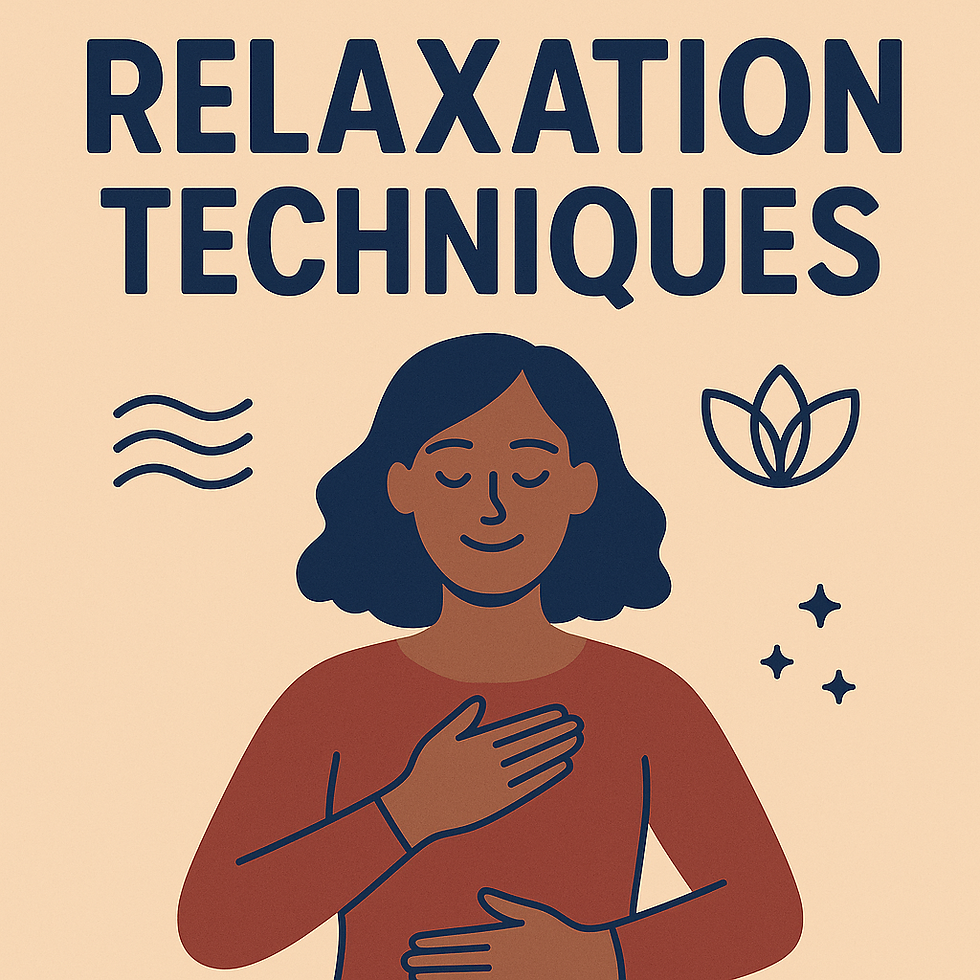Relaxation Techniques
- Dr. Joshua Beaudry
- Sep 22
- 2 min read

When you’re stressed, where do you feel it?
A racing mind?
Anxiety in your chest?
Tension in your jaw, upper back, or hands?
Upset stomach or restless feet?
These are signs your body is stuck in fight-or-flight mode. Over time, this stress state can cause chronic issues like:
Insulin insensitivity
Tight, painful muscles
Hormone imbalance
Brain and mood dysregulation
The goal of relaxation is to shift from fight-or-flight (sympathetic mode) into rest-and-repair (parasympathetic mode).
Techniques We Taught in This Workshop
1. Tapping (EFT – Emotional Freedom Technique)
A simple method using gentle tapping on specific points of the body to reduce stress and rebalance energy.
2. Progressive Muscle Relaxation
Systematically tensing and relaxing different muscle groups to release tension and reset the nervous system.
3. Belly Breathing & Box Breathing
Belly breathing encourages deeper oxygen exchange, calming the vagus nerve.
Box breathing (inhale, hold, exhale, hold in equal counts) regulates breathing rhythm and restores calm.
Each of these tools can help reset your brain and body when stress builds up.
Replacing Self-Medication With True Healing
When the body feels stuck, many people self-medicate with:
Alcohol or tobacco
Marijuana or other substances
Food or sugar
Screen time
While these bring temporary relief, they don’t restore balance to the nervous system. Relaxation techniques like tapping, breathing, and muscle release are healthy, lasting tools to reduce stress without the side effects.
The Takeaway
Stress doesn’t just live in your mind—it shows up in your body. By practicing these simple techniques, you can shift from survival mode into healing, balance, and clarity.
If you’re ready to take the next step, contact us today to set up your initial examination or join us at an upcoming workshop.
Life Springs Family Chiropractic – Denver, CO
Call/Text: (303) 770-0605



